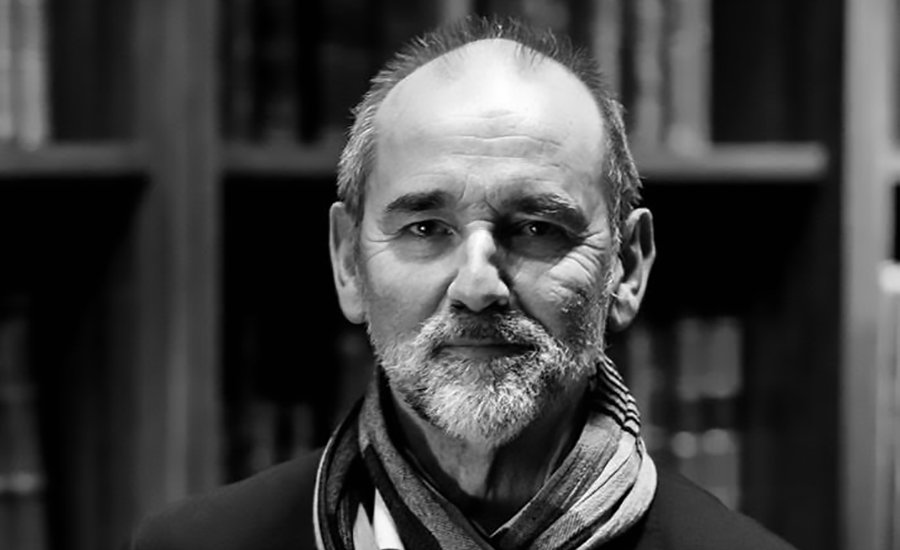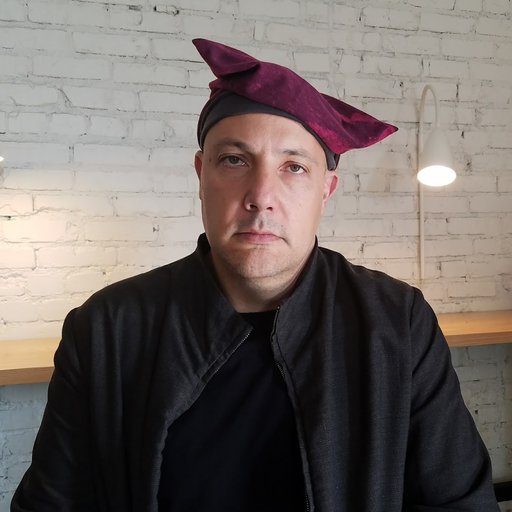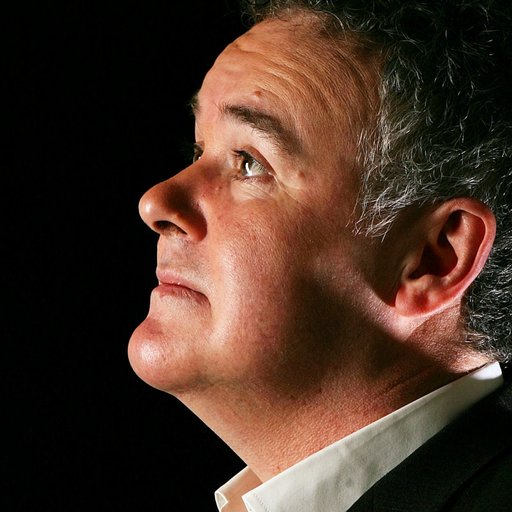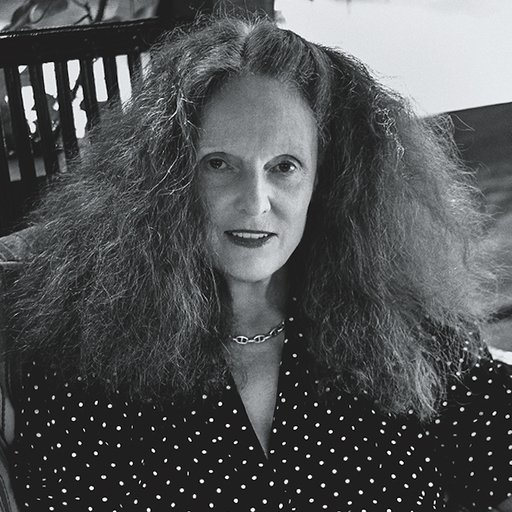As the oldest art school in the UK and with ties to the Crown, the Royal Academy of Arts in London may be just as fancy as its name implies. But despite its traditional history, the Academy is a progressive school, with free tuition, museum-worthy exhibitions, and a faculty jam-packed with heavy-hitting artists like Yinka Shonibare, Wolfgang Tillmans, and Rebecca Warren. And, by maintaining its independence as a private school, it offers the only three-year postgraduate program in the UK and Europe.
At its helm is Christopher Le Brun, who became the Academy's youngest president when he was elected by the Academy in 2011, since Lord Leighton in 1878. Crucial to the Royal Academy’s ideology is that the school is entirely artist-run, and Le Brun is no exception to the rule. A painter, sculptor, and printmaker, Le Brun pays tribute to the Romantics and Symbolists in his work. (If you happen to be in Florida, you can see his work in person at The Gallery at Windsor, opening February 27th, of if you're in New York, you can see his show at Albertz Benda in Chelsea, opening March 2nd.)
Here, Artspace’s Loney Abrams speaks with Le Brun about the difference between tradition and historical continuity, the importance of “doing” in arts education, and the Royal Academy’s unique model as a free, artist-led school.
The Royal Academy is unique in that it’s a school that is funded largely in part by the exhibitions that the Academy hosts in its galleries. I’m wondering what the relationship between the exhibition program and the school is like. Are the students involved in the programing?
One of our students sits on our exhibitions committee so they are part of the decision-making, but they are sitting with really senior figures—staff, art historians, and artists. They are part of it for the experience, but they don’t really determine the program. We focus on making great exhibitions, believing that that’s what the students will want to see. In the RA Schools, in conjunction with the staff, the students determine who comes in as visitors, but on the exhibition program they are witnesses to the process rather than being influential.
The academy was founded in 1768, and it prides itself on its legacy. Art needs innovation, progression, experimentation—how do you negotiate this dichotomy where on one pole you have history, tradition, convention, and on the other you have adaptation and innovation?
Put to the side the question of history. Go back and rather concentrate on continuity. For example, when Lord Frederic Leighton and his friend George Frederic Watts came into the Academy as young artists, they wanted to change the world and they made an exhibition the way they wanted to make it. In their day they were innovative. Now we look back and they look tremendously grand and stuffy, but they were young artists. It was the same for Sir Joshua Reynolds and his friends when they came in in 1768. They were young artists in a tough situation needing to find somewhere to show their work, to sell their work, and a way of setting up a school.
Each generation is innovative. Now, the affect cumulatively is that it looks like a historic progression. To call it tradition is to misname it. It is just another set of artists coming up. At the moment if you look across all different people—whether its Yinka Shonibare, Grayson Perry, Eva Rothschild, or Tracey Emin—they are all new but on another level just the same as Lord Leighton and Watts and Renolds. They are just more artists.
When you look back on the minutes of meetings from over the last 250 years you see the same things come up over and over. They’re always discussing: How do I make my living? What do people think of me? How’s my reputation? What work do I want to show? Do I like these other people I’m in the room with? Exactly the same stuff; it is very human. The way I look at innovation is to really enjoy all of the new temperaments and attitudes and types of people that turn up generation after generation. That is the joy of it. Because we have been around for a long time, it is a bit like having a family home that you can always go back to. We are not going away—we are always going to be here. I like to think of it as a sort of home for artists, in a generous sense. You need to slightly forget the age of an institution and think about all the subsequent generations as young artists.
Whether higher education is worth the expense is a hotly debated topic right now. And before we can know the full ramifications of Brexit or Trump, I think many young people find it hard to justify investing in graduate school, or even to undergraduate school, when the future feels so uncertain. Why do you think art education is a worthwhile investment, especially when a degree in art doesn’t necessarily qualify you for lucrative jobs or stable careers?
Art school didn’t promise me a job when I was a student, either. There are at least two sides to this—probably five or six, seven or eight sides to it. One reason artists need to go to art school is that they need to know what their peer group is thinking. In one way there is no such thing as an untrained or naive artist, it doesn’t work, and it probably never worked. You need to know what is going on, either so you don’t repeat what others are doing, and also to know what you disagree with so you can take up a position relative to your own contemporary art culture. It is very important that the schools carry on teaching art and being a place where you can paint, either at the undergraduate level or graduate level. It is really important.
The other thing is once you start to lose the knowledge those places convey, you break the thread of continuity. When you do that the different generations start to not share the same language, and all of the accumulated knowledge and experience is forgotten. In order to get real depth of culture, real quality of thinking and painting and art-making, you need to remember a lot of things. You can’t remake it all of the time. For all of these reasons art education is profoundly important for artists. The other thing is, as you know you, there is an enormous audience for art. Everyone wants to go and see new art in museums—millions of people—and those people will also have an interest in being educated in it. Even for all of those people who go through graduate school and don’t become artists, they become very attuned and sympathetic to what art is.
Is it possible to gain the education you’re talking about—art history, essentially—by just being a member of the audience you speak of? If I live in New York or London or a city where there is a very robust art scene, could I educate myself through involvement? Isn’t that another way to find context for my own work?
It is, but the difference is doing it. What you are talking about is experiencing work. When you are involved with making it, it is profoundly different. One of the misunderstandings about art is that artists have clever ideas and they then convert them into reality, whatever the form. In fact, the making of the work is the primary content—painting is made of paint, painting isn’t made of ideas, and so the difference between an appreciative audience who loves painting or loves poetry, and the poet and a painter who makes it is quite a serious difference.
Unless we understand through making, then art suddenly gets distorted and you find people suddenly expecting art to send messages, or art to be about serious things, or art to make the world better. Strictly speaking, none of those things are about art. Those are things we ask art to do for us, but they are not really about art. Painting is about painting, and the beauty of painting is somehow free of the necessity of telling us stuff. I think that distinction between learning by experiencing in a great city or learning by doing is really vital.
You went to school in the early to mid 70’s, before the internet, before the art world had become so commercial, before the major rise in biennials and art fairs. Since then, how has the role of the art student changed?
When I went to the Slade I went straight from being a schoolboy, because they only took 12 students a year. It was a very small group of us chosen from applicants from all over the country. The professor knew exactly who each of us was, and that was an amazing privilege. Now, if I go to a school that takes 400 students in its foundation, I immediately feel a little concerned about it—it makes me feel actually rather sad. I can’t see how the professor could know each student in the same way. There is an irony here: education is now extended to far more people and provides far more opportunities. But while the breadth has gotten better, the depth has suffered.
The Slade was different from Chelsea, and Chelsea was different from The Royal Academy. Each had a different identity and history. The Slade was connected to Bloomsbury, you had Augustus John, and the writers of the Bloomsbury group. The Slade had a character to it, a sort of slightly Boho intellectual side, whereas Chelsea was rather King’s Road and fashion, Royal College was very design and smart. Even to this day, The Royal College artists like David Hockney and Allen Jones are very different culturally than I am due to our school’s different traditions. Now, I think that is rather good for the variety of the art world.
This is a rather long answer, but the major difference is the enormous expansion of the field. Also, I was being trained as a painter, which is a very specific tradition. It means my work and the way I put the paint on the canvas would be read in terms of the way Walter Sickert might paint or the way William Alexander Coulter might paint, or the way Philip Wilson Steer might paint, or Whistler. If the students aren’t being taught a particular tradition and are just coming in as “art,” then in a way you have atomized the continuity into small blocks, some of which have very new traditions.
This is a really complicated question you have asked me! I’m trying to answer it directly in terms of my experience. I think that I was fortunate in coming into a continuity of painters in the way that my teacher learned from another teacher and that tradition would have gone all the way back to Degas and the way the French drew—and that means a lot to me. That was tiring! I want to know what you think—are you an artist?
I am, actually, and I did go to grad school and I do have my MFA. I’m just a few years out so I don’t have any historical experience for context, but I will say that I do feel the weight of my student loans, that’s for sure—and I think that that’s a relatively new phenomenon. But I think this student debt problem is mainly an American thing. Am I right in thinking that the Academy is free of tuition?
Yes.
How can that be?
That’s a good question! When they set the RA Schools up, they began a Summer Exhibition program, and some of the proceeds of the exhibition went to pay for the school—and that’s exactly the same today. We do this enormous Summer Exhibition open to everybody in the world. Hundreds of thousands of people come to see it and we sell a lot of work. The artists get 30% and the Academy puts the money it makes back into the Schools. This is one of our principles. You have to blink and scratch your head to believe it’s true, but it’s true. Every now and then we get advice from somebody who says we must be sweating our assets and we should be making people pay tuition who can afford to pay, but this is absolutely out of the question. By keeping free tuition as a principal, we’re left free to chose people by merit, to chose people that we think we can help or those who would make the best use of three years. We are not accredited, we are not part of any university system—students are just coming here to study at The Royal Academy. It is a unique model in this country and Europe as well.
Why isn’t this model more common? It just seems so obvious and yet no one uses it. Is that because for the model to work, the school needs a huge audience, a huge collector base, and a long history?
It’s a good question. Maybe nobody else would be mad enough to do it, because it is a lot of work and most of my job is fundraising. The great thing that we do have that nobody else could match is that we have a building that is free, because the government gave us a 999-year-long lease. Originally The Academy was set up at Somerset House by Waterloo Bridge, where Turner and Reynolds were, then they moved to the National Gallery on Trafalgar Square. In 1868 they came here to Piccadilly, and the deal was that we were given the building for free—that was the government’s way of supporting us, and it didn’t cost the government any money. In return for that we have charity status, and I think we contribute a lot to national life. For example, if the president decides to visit, he might decide to come to The Royal Academy—quite often we do that sort of thing.
We are slightly at arm’s length from the establishment but, because we are connected to the crown, we do all sorts of things that are in the general public interest. We don’t act like a private organization. We are a private organization that is there for the public good. The person we look up to isn’t the government but rather the crown. I go to see the Queen every year. I take our accounts and she signs them off. That is really important as a symbol to reinforce independence for The Royal Academy. The government can’t come and take us over or tell us what to do. That sort of thing we don’t talk about very much but it is rather important.
If you link that back into the free education of the students, we have sort of drawn a line around a very benign place to care for the arts. All of the Royal Academicians that serve on the committees give their time for free, apart from the offices that get a stipend. You are sort of getting a lecture on British history here, I hope you realize that—but it is relevant. The other question that sort of lurks is: where do we get our money, and if we get it from big business then won’t they start influencing our exhibition program? The way that we negotiate, since we do have corporate sponsors, is to put on an exhibition program that the sponsors would want to be associated with, and they would be really messing it up if they tried to interfere.
The year that you became president of the Royal Academy you also had three solo shows. How do you juggle your administrative career with your career as a painter and artist?
I am really good at keeping them separate. I work Monday to Wednesday at the academy in my suit and tie from early morning to late at night. Thursday, Friday, and Saturday I am in the studio painting. I’ve got a very good studio manager who keeps things running for me. We have a hand-over on Thursday morning in the studio, and then she leaves me and I am back in the world of painting. It seems to work and has surprisingly given me more energy for my painting; I’m not quite sure why that is, but that’s what happened.
How do you feel that your painting influences your job at the Royal Academy? And more generally, what do you think artists can offer art education?
The academy is really helpful because it is a place run completely by artists. The same thing applies now as when it started. It is an opportunity for artists to speak directly to a wise public without going through the medium of the commercial system, or the museum system, or publicly funded help, or anything like that. This is really important. The ideal is that the voice or attitude of the artist is represented somewhat directly. At the same time, The Academy is a charity and therefore it is not designed to make money—it is designed to promote the arts and design. But, because it is also a big business, as it were, artists get involved with all aspects of the academy and how to run it, from its exhibition program to looking after the schools to looking after the collections to their general view of where they want to be in the art world and how they want to speak out on any issues. All of those are unique virtues of the system of The Royal Academy.
When you say artists being involved in all of these things, do you mean the students?
No, I mean the Academicians—the painters, sculptors, architects, printmakers. All of us get together and we literally run the Academy, although we have a chief executive who looks after the staff, the Academicians look after the direction of the Academy and make, as it were, decisions alongside the staff. They are the trustees or the board of the Academy.
As you say, it is a rare opportunity for artists to be unmediated in their interactions with the public. How do you think that influences the program? What is the benefit of not being beholden to the market, or to a museum, or to shareholders?
One way to describe it is to talk about how we present our exhibitions. Obviously, we need our exhibitions to attract people to them and we need lots of visitors to buy tickets and support us. I think the difference is that we’ve had a whole series of monographic exhibitions—whether its David Hockney, Anish Kapoor, or Anselm Kiefer—where we have effectively given them the galleries and we’ve said, “Look, you make the exhibition you really want to make”, and we have done that with very little interference, we just support. For example, with the Anselm Kiefer exhibition, he wanted to put a big sculpture on the top of the stairs where we normally sell the catalogues and the books, but we made sure that Anselm could put his sculpture there, which had an effect on our income. We had a discussion with Anselm on ways of matriculating that and he was very helpful. The same sort of thing happened with David Hockney. David was given all of the galleries and was allowed to do anything he wanted. We really have the ideal of trying to let the artist make the exhibition that they want, unmediated. We find that that often captures the public imagination and also captures the imaginations of our sponsors who like to see us making the greater exhibitions. The Abstract Expressionist exhibition is a good example as well. We thought that it was the time to do it and had a clear goal—to make the greatest Abstract Expressionism exhibition ever.
That’s a tall order!
I know, I know. We’re like that [laughs]. The last time a big survey show had been shown in Europe was in 1959. In fact, many people are saying this is the Ab Ex great show! It was wonderful to get together a room of Clyfford Stills. I talked to Sandra Stills—his daughter—at the opening and I asked “What would your father have thought about this?” I was aware that he was very strict about how he would allow his work to be seen. She said he would have loved it. That was very important to me because I felt I was hearing her father through her. Because it was just run by artists, because it didn’t have commerce as its primary aim, he would have been entirely comfortable with giving such a generous group of works.























